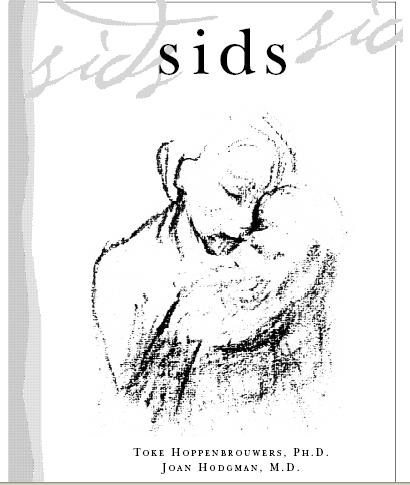The brains of babies who died as a result of crib death syndrome produced low levels of serotonin, a substance found in the brain that transmits messages between the various cells and plays a crucial role in regulating breathing, heart rate, and the quality of sleep - so report researchers funded by the National Institutes of Health in the US ( NIH).

The scientists hypothesize that the abnormalities in serotonin levels discovered in their study may weaken the baby's ability to respond properly during a respiratory crisis, such as low oxygen concentrations or high carbon dioxide concentrations. These high concentrations may be due to rebreathing of carbon dioxide vapors that accumulated in the bedding during sleep with the baby's face down. The research findings were published in the scientific journal The Journal of the American Medical Association.
"We have known for many years that laying the baby on his back is the only effective way to reduce the risk of this syndrome," says Alan E. Guttmacher, a doctor who was part of the research team. "These findings provide important clues to understanding the biological basis of the syndrome that could, in the end, lead to the development of ways to locate babies who are in a risk group as well as to the development of additional methods to reduce the risk of this syndrome in all babies."
The "Sleep on the back" propaganda campaign encourages parents and caregivers of babies to put them to sleep on their backs. Following the launch of this explanatory campaign in 1994, the number of babies diagnosed as having this syndrome was reduced by half. It seems that widespread adoption of this recommendation did reduce the amount of occurrence of the syndrome, but did not eliminate it completely.
In this study, the scientists examined small tissue samples from the medulla oblongata, an area in the brain stem that regulates basic functions such as body temperature, breathing, blood pressure and heart rate. The scientists examined brain tissue from babies who died of the syndrome and a control group of babies who died as a result of other causes. In the study, tissues from thirty-five babies who died of the syndrome were examined, five who died from unexpected causes and five who died from factors related to the lack of oxygen.
The researchers found that the serotonin levels in the tissues from the babies who died of the syndrome were twenty-six percent lower than the tissues of the babies who died due to other causes. It was also found that the levels of tryptophan hydroxylase, an enzyme required for the production of serotonin, were also twenty-two percent lower.
In a previous study comparing SIDS cases with deaths from other causes, the same researchers showed that the brains of SIDS victims had higher levels of medulla cells that use serotonin. In the current study, the scientists wanted to determine if this indicates that the brains of the deceased babies did indeed have abnormal levels of serotonin.
This anomaly seems to fit the three-risk model of crib death syndrome, which states that the syndrome appears when three different factors combine: a baby with a built-in vulnerability, a critical developmental period and an external stressor. The researchers hypothesized that in this case the low level of serotonin would create a built-in vulnerability in the baby. The first year of a baby's life is the critical period of development for the growth of vital bodily functions such as breathing. The third factor of the model, sleeping face down, may give rise to the external stress factor.
"Our study suggests that sleep reveals and activates this brain defect," explains one of the lead researchers. When the baby breathes in a position where his face is down, the amount of oxygen he breathes may not be enough for him. A baby with a healthy brainstem will wake up in response to such a situation. However, a baby with a brain in which the abnormality exists will not be able to react to the situation in time and will eventually suffocate to death."
"This is not a single factor, but an accumulation of unusual factors that together lead to death," say the researchers. In fact, in eighty-eight percent of the cases studied, the scientists found two or more risk factors, such as the baby's sleeping position, an illness he was diagnosed with, or exposure to cigarette smoke.
The researchers hope that these findings will one day lead to the development of a test that can measure the serotonin levels of babies in the blood or other tissues and that will reflect its corresponding levels in the brain. Such a test could enable the detection of babies who are in the risk group for cot death syndrome and the taking of essential steps to prevent it. In the near future, the findings will provide the basis for the development of animal models with defects in serotonin levels, so that they can imitate the behavior that appears in babies with this syndrome.

One response
Maybe this is also one of the reasons for breathing disorders during sleep in adults???
It is advisable to check this as well. After all, in sleep laboratories, when looking for the causes of breathing disorders, they indicate whether the cause is obstructive or from a central source, i.e. from the brain. Although it is not possible to analyze the brains of adults, if they find the test that they can use to test the serotonin levels in the brains of babies, they will be able to test them in adults as well.
Also, such a test will be a means (at least one) for diagnosing depression.